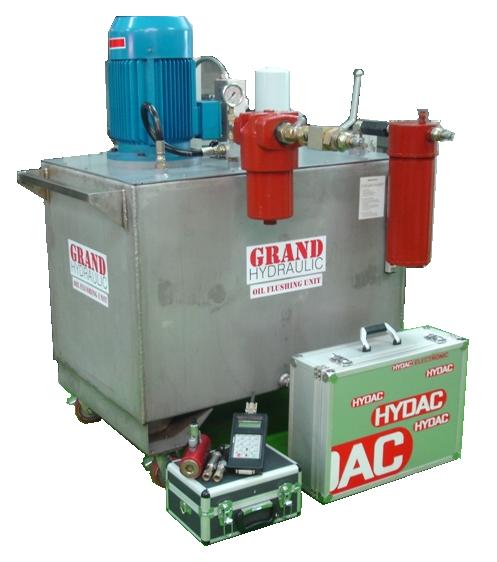SERVICE - FLUSHING
-
Alkaline degreaser (usually soda ash Na2CO3) to remove any dirt, grease, oil and fats (pH level between 13-14).
-
Acid cleaner (usually hydrochloric HCI) to remove any rust, debris, scale, etc (pH level between 4-5).
-
Neutralize (usually soda ash Na2CO3) to neutralize the acid cleaner (pH level between 7-8).
-
Rinse (usually Demin water) with clean hot soft water (pH level 7).
-
Passivate (usually rodine 213) with corrosion inhibitor (pH at between 7-8).
-
Turbulent flow must be given during circulation.
-
Temperature must be monitor and control through the process.
-
pH level must be monitor and control through the process.
-
Use only clean Demin water.
-
Use only clean and water free compress air.
This chemical flushing look easy to carry out but one little mistake will cause lot of problem, costly and time consuming.
To solve all the above problem, we can carry out the same chemical flushing with simple process with not only escape from difficult process and fast with same or exceed quality result.
-
Chemical A as degreaser and cleaner to remove all the dirt, grease, oil, fats, rust, debris, scale. Paints, etc in one go.
-
Rinse with clean water, room temperature will do.
-
Chemical B as corrosion inhibitor.
-
*Not require hot water, Demin water and turbulent flow.
Below are the some sample taken from our chemical flushing which give very high quality result as customer needs.
The purpose of oil flushing is to make sure the pipelines and operation oil is clean and free from contamination. Normally oil flushing is carrying out after the chemical flushing and for some pipelines only oil flushing is carries out.
Oil flushing must be continuing until the target cleanliness code is achieved. Normally target cleanliness code one step lower than require level. Example, if require ISO4406:1999 class 18/17/16, the target cleanliness code should be 17/16/15 or batter. If require cleanliness code on NAS standard, the same target will be use. Example, if require code is class 9, the target code should be class 8 or batter.
Normally, the cleanliness code select by taking the most sensitive component in the systems. Let say hydraulic pump is the most sensitive components from the whole systems, example requires ISO4406:1999 class 18/17/16, than the target cleanliness class should be 17/16/15 or batter.
To achieve the cleanliness code during flushing below step should be taking as guidelines:
-
Turbulent flow must be given during flushing in order to remove dirt, debris and any foreign contamination. Calculation can be made to calculate the require flow to achieve turbulent depending on pipe size and oil viscosity.
-
Low viscosity flushing oil should be select which can contribute for turbulent flow.
-
Special inhibitor added flushing oil should be select in order to reduce corrosion attack on recent chemical flush pipelines.
-
Temperature should be control through the process in order to achieve the quality oil flushing job.
-
Only fiberglass filter media with minimum of 200 beta should be select as filter element for oil flushing. Micron size can be select according to target cleanliness class.
-
At least one filter on delivery line and second filter on return line must be installed. Monitoring of oil cleanliness sample must be taken on-line before the second return filter.
-
Pulsation flow should be given for large pipelines as well small pipelines to increase oil flushing pushing power.
-
Contamination level must be monitor on-line through the oil flushing process.
-
Water content should be monitor through the oil flushing process and if require water adsorbent filter or water remover purifier can be mounted and operating off line.
-
Flushing oil must be circulating in the flushing tank until target cleanliness class before flushing the pipelines.
-
Oil flushing process should be continuing operating at least for 1 or 2 hours after the target cleanliness class is achieved.
-
Looping hoses or connector must be hanging and clean before looping joint.
-
Looping for the pipelines must be same as pipelines internal diameter.
-
Magnetic filter can be installed on return line filter to catch ferrous practical and on the same time reduce number of filter element used.
Below are the sample of our oil flushing unit










